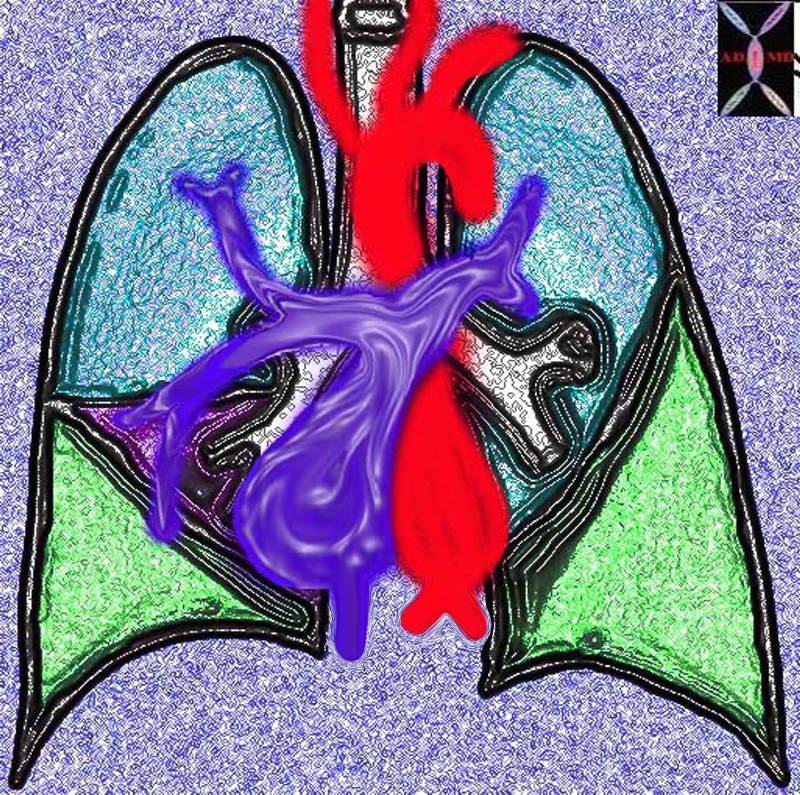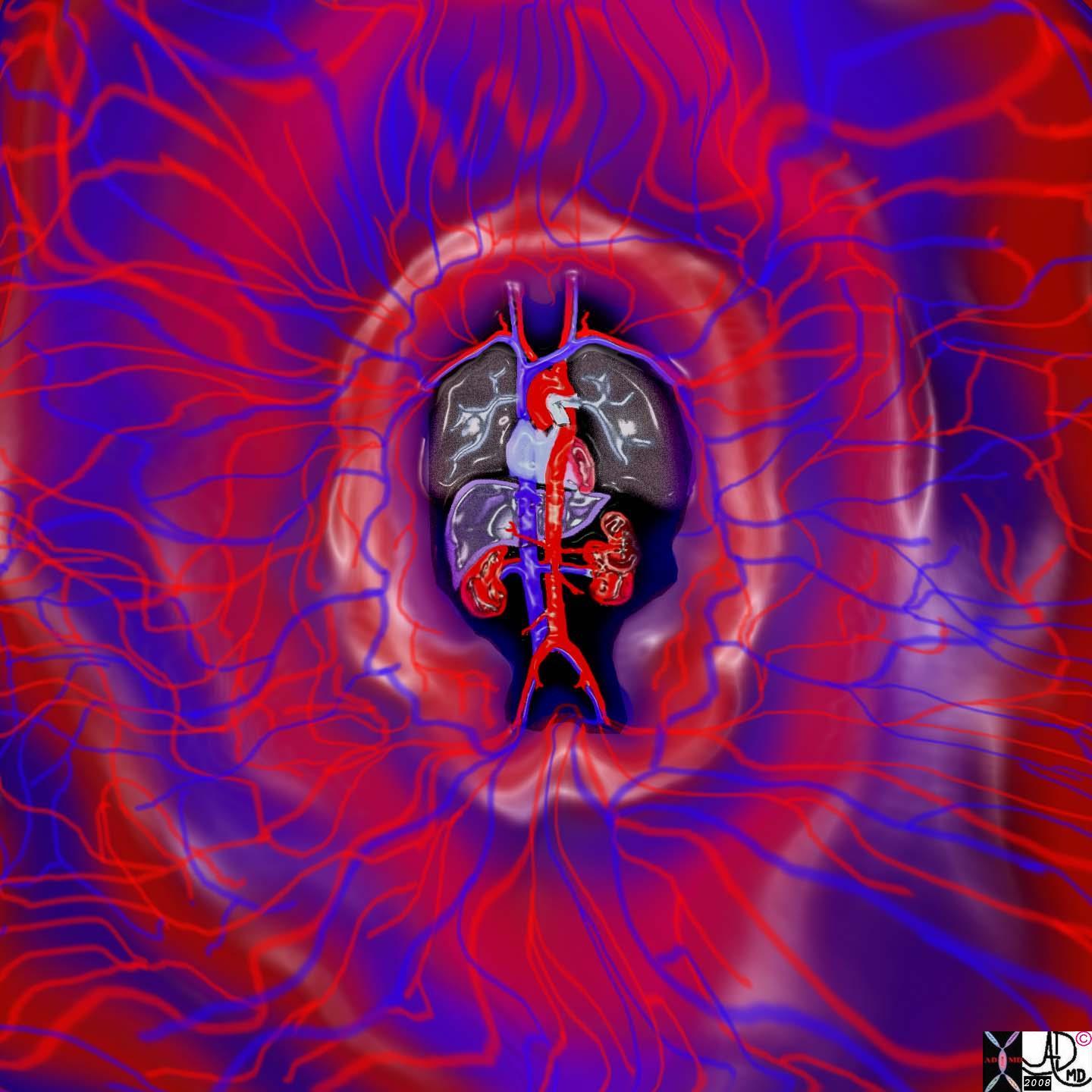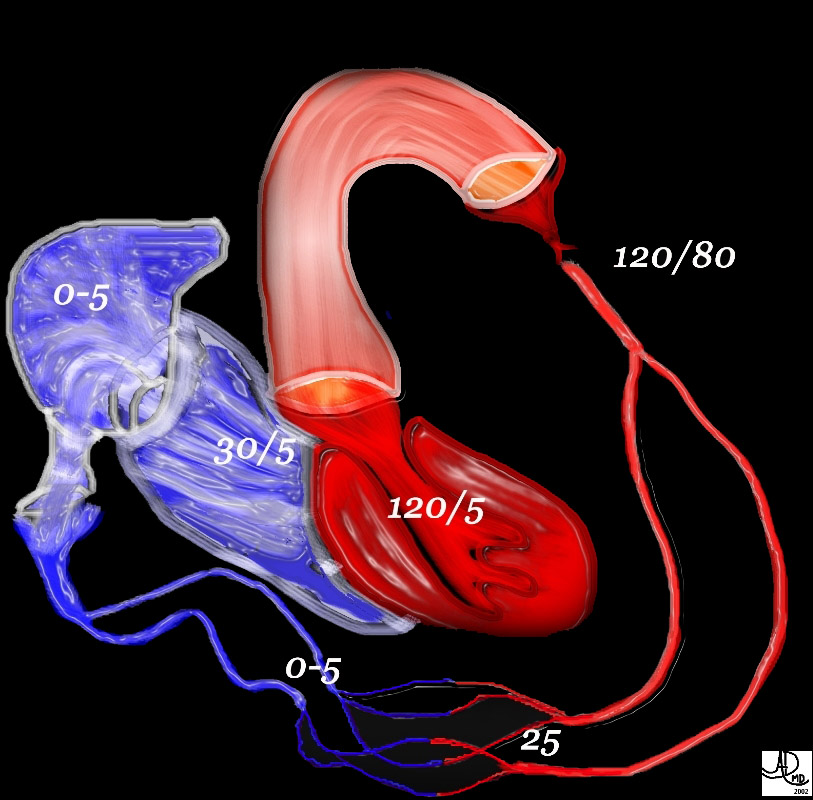The Common vein Copyright 2012
Introduction

The Circulation – Tree Like Morphology |
|
tree of life tree of knowledge Copyright 2012 Courtesy Ashley Davidoff MD 03105pb01 |
The arteries are part of the bridging system that connect the parts of the body that enable the “whole” to function.
Specifically they are the conduits that deliver blood to the organs from the heart.
There are two separate arterial systems in the body
The systemic arterial system
The pulmonary arterial system

32687b02.15k.8s |
| 32687b02.15k.8s This diagram shows the right ventricle and lobar pulmonary arteries in blue and the left ventricle and aorta in red. Note that the lobar pulmonary arteries have the same irregular dichotomous branching pattern as the lobar bronchi and give 3 major branches to the right lung (RUL, RML and RLL arteries) and two to the left (LUL and LLL pulmonary arteries). As you will see and learn later, even the position and direction of the main pulmonary arteries in relation to the main stem bronchi are asymmetrical. Courtesy Ashley Davidoff MD 32687b02.15k.8s Davidoff art |

The Arterial Circulation |
| The systemic arteries (shown in red) take their origin from the heart and deliver blood to structures from the head to the toe ensuring so that all the systemic organs and their cells receive adequate oxygenated blood. The pulmonary circulation carries the deoxygenated blood to the lungs
Copyright 2012 Courtesy Ashley Davidoff MD 32059.41ks |

49483b01 |
| 49483b01 heart cardiac LV left ventricle aorta aortic systemic circulation capillary capillaries arterioles venules right atrium RA right ventricle RV normal physiology pressures hemodynamics Davidoff MD Davidoff art |
